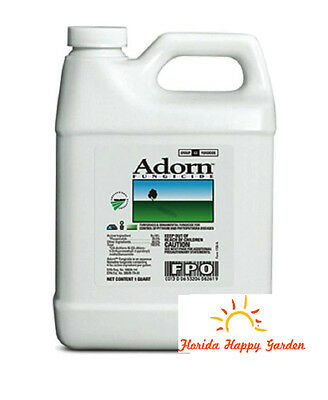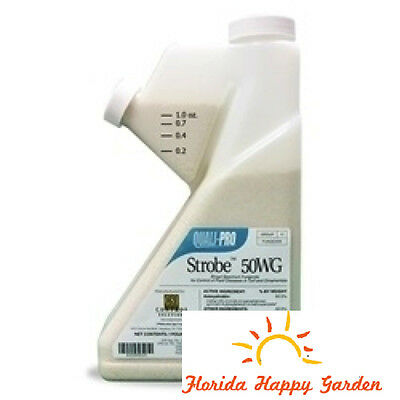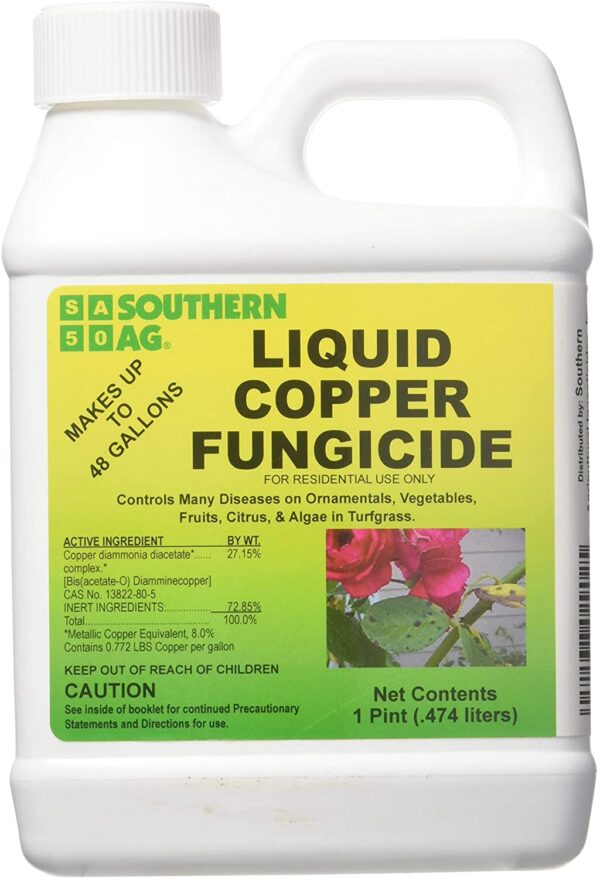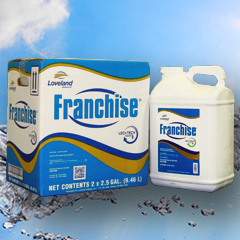Your cart is currently empty!

INITIATE 720
₦76,727.00
INITIATE 720 is a broad-spectrum protectant fungicide that controls a variety of foliar diseases in over 70 crops. ACTIVE INGREDIENTS Chlorothalonil. PRODUCT BENEFITS: IPM compatible Multiple-site mode of action minimizes incidence of disease resistance Broad spectrum control means one product for multiple pathogens Long-lasting control reduces number of sprays.GENERAL PRECAUTIONS AND RESTRICTIONSDO NOT use on […]
Description
INITIATE 720 is a broad-spectrum protectant fungicide that controls a variety of foliar diseases in over 70 crops.
ACTIVE INGREDIENTS
- Chlorothalonil.
PRODUCT BENEFITS:
- IPM compatible
- Multiple-site mode of action minimizes incidence of disease resistance
- Broad spectrum control means one product for multiple pathogens
- Long-lasting control reduces number of sprays.GENERAL PRECAUTIONS AND RESTRICTIONS
DO NOT use on greenhouse-grown crops except as directed in the ORNAMENTAL
PLANTS section of this label.
DO NOT apply when wind speed favors drift beyond the target area. Observe all
spray drift precautions for ground, aerial and chemigation applications.
DO NOT combine Initiate 720 Rowable Fungicide in spray tank with pesticides, surfactants or fertilizers, unless your prior use has shown the combination physically compati·
ble, effective and noninjurious under your conditions of use. DO NOT combine Initiate
720 Flowable Fungicide with Dipel®, Latron B·19500l> or Latron AG-98® as phytotoxici·
ty may result from the combination when applied to the crops on this label.
This product must not be applied within 150 feet (for aerial applications) or 25 feet (for
ground applications) of marine/estuarine water bodies unless there is an untreated buffer
area of that width between the area to be treated and the water body.
spray Drift Precautions
Avoiding spray drift at the application site is the responsibility of the applicator. The inter·
action of many equipment and weather related factors determine the potential for spray
drift. The applicator and the grower are responsible for considering all these factors
when making decisions.
The following drift management requirements must be followed to avoid off target drift
movement from aerial applications to agricuttural field crops. These requirements do not
apply to forestry applications, public heatth uses or applications using dry formulations.
1. The distance of the ouler most nozzles on the boom must nof exceed % the length
of the wingspan or rotor.
2. Nozzles must always point backward parallel with the air stream and never be
pointed downwards more than 45 degrees.
Where states have more stringent regulations, they should be observed.
The applicator should be familiar with and take into account the information covered in
the Aerial Drift Reduction Advisory Information.
Aerial Drift Reduction AdviSOry Information
[This section is advisory in nature and does not supercede the mandatory label
requirements.] Information on Droplet Size
The most effective way to reduce drift potential is to apply large droplets. The best drift
management strategy is to apply the largest droplets that provide sufficient coverage and
control. Applying larger droplets reduces drift potential but will not prevent drift if applications are made improperly, or under unfavorable conditions (See Wind, Temperature).Information on Droplet Size
The most effective way to reduce drift potential is to apply large droplets. The best drift
management strategy is to apply the largest droplets that provide sufficient coverage and
control. Applying larger droplets reduces drift potential but will not prevent drift if applications are made improperly, or under unfavorable conditions (See Wind, Temperature).Information on Droplet Size
The most effective way to reduce drift potential is to apply large droplets. The best drift
management strategy is to apply the largest droplets that provide sufficient coverage and
control. Applying larger droplets reduces drift potential but will not prevent drift if applications are made improperly, or under unfavorable conditions.Controlling Droplet Size(‘
o Volume – Use high flow rale nozzles to apply the highest practical spray volume.
Nozzles w~h higher rated flows produce larger droplets.
o Pressure – Do not exceed the nozzle manufacture(s recommended pressures. For
many nozzle types, lower pressure produces larger droplets. When higher flow rates
are needed, use higher flow rate nozzles instead of increasing pressure.
• Number of Nozzles – Use the minimum number of nozzles that provide uniform
coverage.
• Nozzle Orientation – Orienting the nozzles so that the spray is released parallel to
the airstream produces liu-ger droplets than other orientations and is the
recommended practice. Significant deflection from horizontal will reduce droplet size
and increase drift potential.
o Nozzle 1tpe – Use a nozzle type that is designed for the intended application. Wnh
most nozzle types, narrower spray angles produce larger droplets. Consider using
low-drift nozzles. Solid stream nozzles oriented straight baclfJJ”rQi:lU& ,’he largest
droplets and the lowest drift potential. C G
( C (. C
Boom Length r c
For some use patterns, reducing the effective boom length f0 q&’sQ than % of the
wingspan or rotor length may further reduce f
Drift potential is lowest between wind speeds 0′ C-l0 mph. HXJeVer, many factors,
including droplet size and equipment type n~e(rrei~ef drift pote.~tial at any given speed.
Application should be avoided below 2 mph due to variable wine’ o”rcQ”icr!l(lnd high inversion potential. NOTE:
Temperature and Humidity - When making applications in low relative humidity, set up equi,Jr.lent tJ produce larger
droplets to compensate for evaporation. Droplet evaporation i~.most severe when conditions are both hot and dry.
Temperature Inversions
Applications should not occur during a temperature inversion because drift potential is high. Temperature inversions restrict vertical air mixing, which causes small suspended
droplets to remain in a concentrated cloud. This cloud can move in unpredictable directions due to the light variable winds common during inversions. Temperature inversions are characterized by increasing temperatures with altitude and are common on nights with limited cloud cover and light to no wind. They begin to form as the sun sets and often continue into the morning. Their presence can be indicated by ground fog; however, if fog is not present, inversions can also be identified by the movement of smoke
from a ground source or an aircraft smoke generator. Smoke that layers and moves laterally in a concentrated cloud (under low wind conditions) indicates an inversion, while
smoke that moves upward and rapidly dissipates indicates good vertical air mixing.
APPLICATION
Dosage rates on this label indicate pints of Initiate 720 Flowable Fungicide per acre.
unless otherwise stated. Under conditions favoring disease development the high rate
specified and shortest application interval should be used.
Note: Slowly invert container several times to assure uniform mixture.
The required amount of Initiate 720 Flowable Fungicide should be added slowly into the
spray tank during filling. With concentrate sprays, pre-mix the required amount of Initiate
720 Flowable Fungicide in a clean container and add to the spray tank as it is being filled.
Keep agitator running when filling spray tank and during spray operations.Field and Row Crops Apply Initiate 720 Flowable Fungicide in sufficient water to obtain adequate coverage of foliage. Gallonage to be used will vary with crop and amount of plant growth. Spray volume usually will range from 20 to ISO gallons per acre (200 to 1400 liters per hectare) for dilute sprays and 5 to 10 gallons per acre (SO to 100 liters per hectare) for concentrate ground sprays and aircraft applications. Both ground and aircraft methods of application are recommended unless specific directions are given for a crop. Application through sprinkler irrigation systems is not recommended unless specific directions are given for a crop. See application and calibration instruction below.
Application and Calibration Techniques for Chemigation
Apply this product only through center pivot, motorized lateral move. traveling gun, solid
set and portable (wheel move, side roll, end tow, or hand move) irrigation system(s). DO
NOT apply this product through any other type of irrigation system.
Crop injury, lack of effectiveness, or illegal pesticide residues in the crop can result from
non-uniform distribution of treated water.
If you have questions about calibration, you should contact State Extension Service speCialists, equipment manufacturers or other experts.
DO NOT apply this product through irrigation systems connected to a pubfic water system. ‘Public water system’ means a system for the provision to the public of piped water
for human consumption if such system has at least 15 service connections or regularly
serves an average of at least 25 individuals daily at least 60 days per year.
Controls for both irrigation water and pesticide injection systems must be functionally
interlocked, so as to automatically terminate pesticide injection when the irrigation water
pump motor stops. A person knowledgeable of the irrigation system and responsible for
its operation shall be present so as to discontinue pesticide injection and make necessary adjustments, should the need arise.
The irrigation water pipeline must be fitted with a functional, automatic, quick-closing
check valve to prevent the flow of treated irrigation water back toward the water source.
Additional information
| Weight | 1 kg |
|---|



